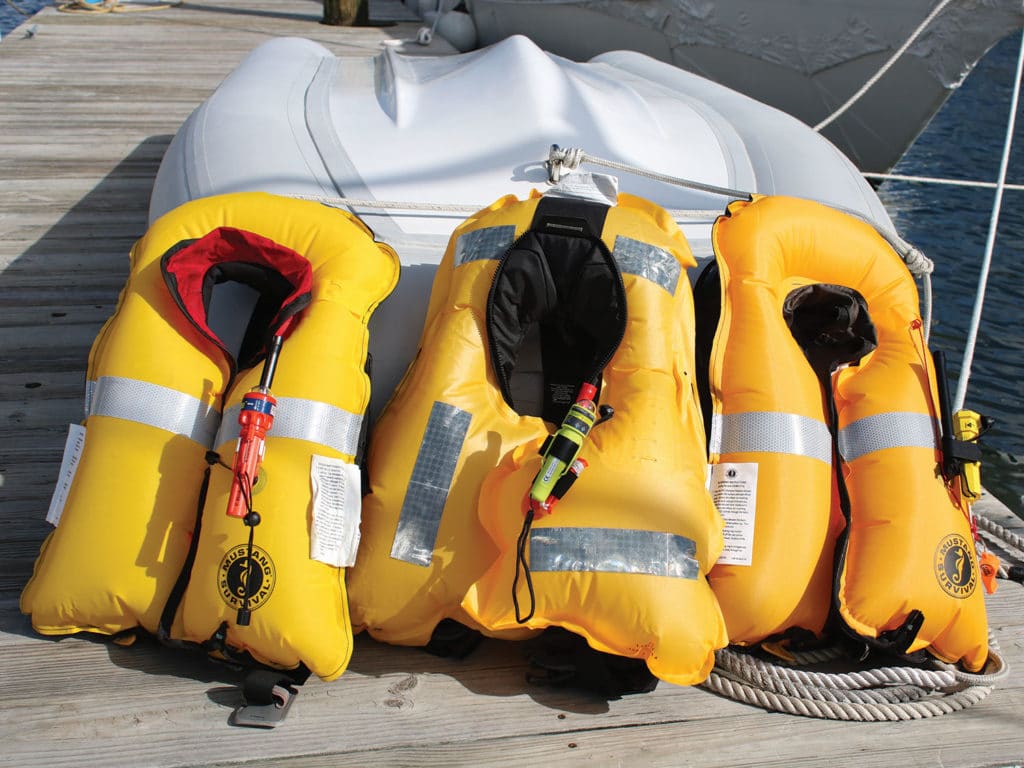
Every so often it’s healthy to be reminded that even on a well-built and maintained boat, sailed by a seasoned crew, things can — and do — go wrong, as they did on Lake Michigan last July, just 26 minutes into the annual Race to Mackinac from downtown Chicago.
In 20- to 25-knot winds and 6- to 8-foot waves, Jon Santarelli, an experienced crew member, was working at the aft end of the cockpit of the TP 52 Imedi when he went into the water and his life jacket failed to inflate. The crew immediately tacked the boat and circled back, making three attempts to save their mate. In the end, just as those on board tossed a line, Santarelli went under. His remains weren’t recovered until a week later.
In the aftermath of the tragedy, the Chicago Yacht Club asked a committee of local and national sailing experts to investigate the accident in an attempt to understand what happened and recommend steps to increase the safety of offshore regattas. Their report, released last February, includes a list of recommendations that, while tailored for racers, should interest any of us who are headed out on the water.
Here are a few of the takeaways I got from reading their conclusions (the complete document can be found here).
First, the most obvious: If conditions warrant it, wear a life jacket — and here, I use the term “conditions” loosely. It could refer to guests aboard who are poor swimmers, or it could involve a mechanical problem that puts vessel and crew at risk. On my boat, I think about PFDs when wind and waves get overly sporty, sailing after dark, and operating in fog or squalls — especially if there’s lightning. I figure, why go looking for multiple problems?
Aboard Imedi, some of the crew brought their own life jackets, others, including Santarelli, used boat-supplied ones. The report states the crew verified the PFDs on board had been inspected a week prior to the start and that the hydrostatic inflators displayed green, but “no expiration date was noticed.” The crew told investigators that the life jackets came with the boat, which means they could have been more than 10 years old.
It was not known whether the inflator in Santarelli’s PFD had ever been updated.
If you use inflatable PFDs, read and follow the manufacturers’ maintenance instructions closely, including checking to make sure the inflation devices are not past their expiration dates. Mustang Survival, for instance, recommends checking over and orally inflating a PFD every six months (more often is better), and letting it sit for at least two hours to see if it remains firm. Besides detecting a leak, opening the vest and repacking it will let you become familiar with how it works.
“Know your life jacket,” says Mark Anderson, Mustang’s director of engineering. If you have a PFD with a recently expired inflator, since you’ll need to rearm it anyway, he suggests you try inflating it just to see what it feels like when the carbon-dioxide cartridge fires.
In their findings, the CYC committee noted that reports of PFDs failing to inflate are not uncommon. “In fact, the Coast Guard explained that based on their experience, they train their personnel to the point of ‘muscle memory’ to pull the manual inflation cord on an inflatable jacket when they hit the water, and not to even wait for the automatic feature to function. According to the Coast Guard, they have experienced instances that without such training, a person who unexpectedly finds themselves in the water does not have the cognitive presence of mind to react by either pulling the manual cord or using the oral inflator.”
If you have a guest aboard who will be wearing an inflatable PFD, take a minute before you set sail to have them put it on and adjust it so it fits. Explain how it works. I think from now on, I will even make a point of opening the vest so a newbie crew will know how to reach the oral inflation tube, if needed.
The CYC committee notes, “The safety of a boat and her crew is the sole and inescapable responsibility of the person in charge.” Starting with the basics — PFDs and crew overboard gear — only makes good sense.








